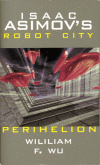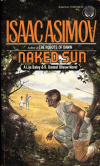I came across a recommendation for Tau Zero by Poul Anderson on a top 10 list of science fiction novels. I was a bit intrigued because I recognized all of the authors on the list except this one. I did a little bit of research and found that this novel was more of “hard” science fiction. I wasn’t sure exactly what to except, and after just a few chapters I was pleasantly surprised.
A group of 25 male and 25 female scientists are selected to go on an interstellar colonization mission. Their ship, the Lenora Christine, is equipped with an advanced Buzzard engine. This engine is designed to feed off of hydrogen particles in its path while at the same time repelling other particles that would normally tear the ship apart at high velocities. The ship is designed to travel at near the speed of light, and relativity plays a significant role in the plot. After striking a nebulae that was a bit too dense for the Buzzard engine to redirect enough particles, the decelerator was damaged. There was no way to slow down. If they shut the Buzzard engine down to make repairs, they would be killed in minutes without the shielding.
So, these 50 people that expected to spend only a few years on a space ship with the prospect of starting a new colony find themselves doomed to probably never leave their ship alive. Much of the novel is about how the different crew members handle their fate. Some keep searching constantly for a possible solution, while others begin to feel completely helpless. Overall, I enjoyed this novel because it was so different than much of the science fiction I have read so far. If it wasn’t for the fact that the characters were traveling near the speed of light on a space ship, I’d say the plot seemed a lot like a soap opera. People sleep around, fall in love, cheat and fight. It takes a strong character like Constable Reymont to keep everyone from tearing each other apart. Although he steps up to keep everyone in line, he has flaws of his own.
Many of the details of space flight that are generally glossed over are explained by Anderson. The actual functionality of the Buzzard engine is complicated, but makes sense when laid out like it is in the novel. The main thing that I think is ignored is how to create a gravitational field on spaceships. Instead of having a “magical” gravity system, the field on the Lenora Christine utilizes constant acceleration. Another aspect of the novel are the descriptions of the crew members moving around in zero-gee or lower relative gravity levels. Finally, the theory of relativity is explained rather well by comparing the passage of time from the perspective of the crew to that back on Earth. If you’ve never read “hard” science fiction, give this book a chance, I’m sure you’ll enjoy it.


